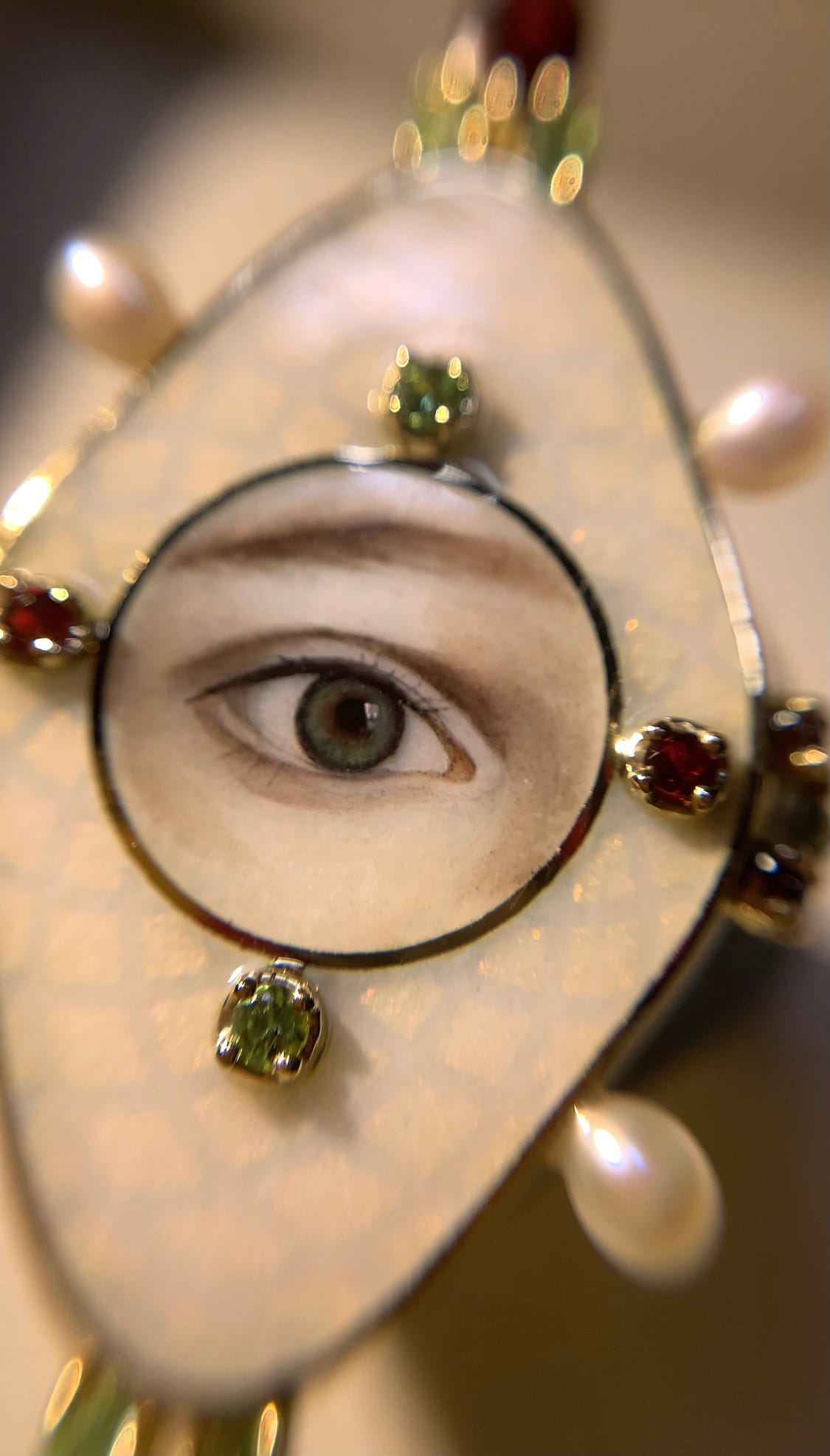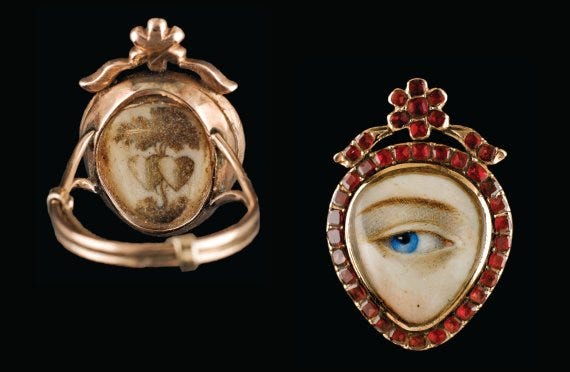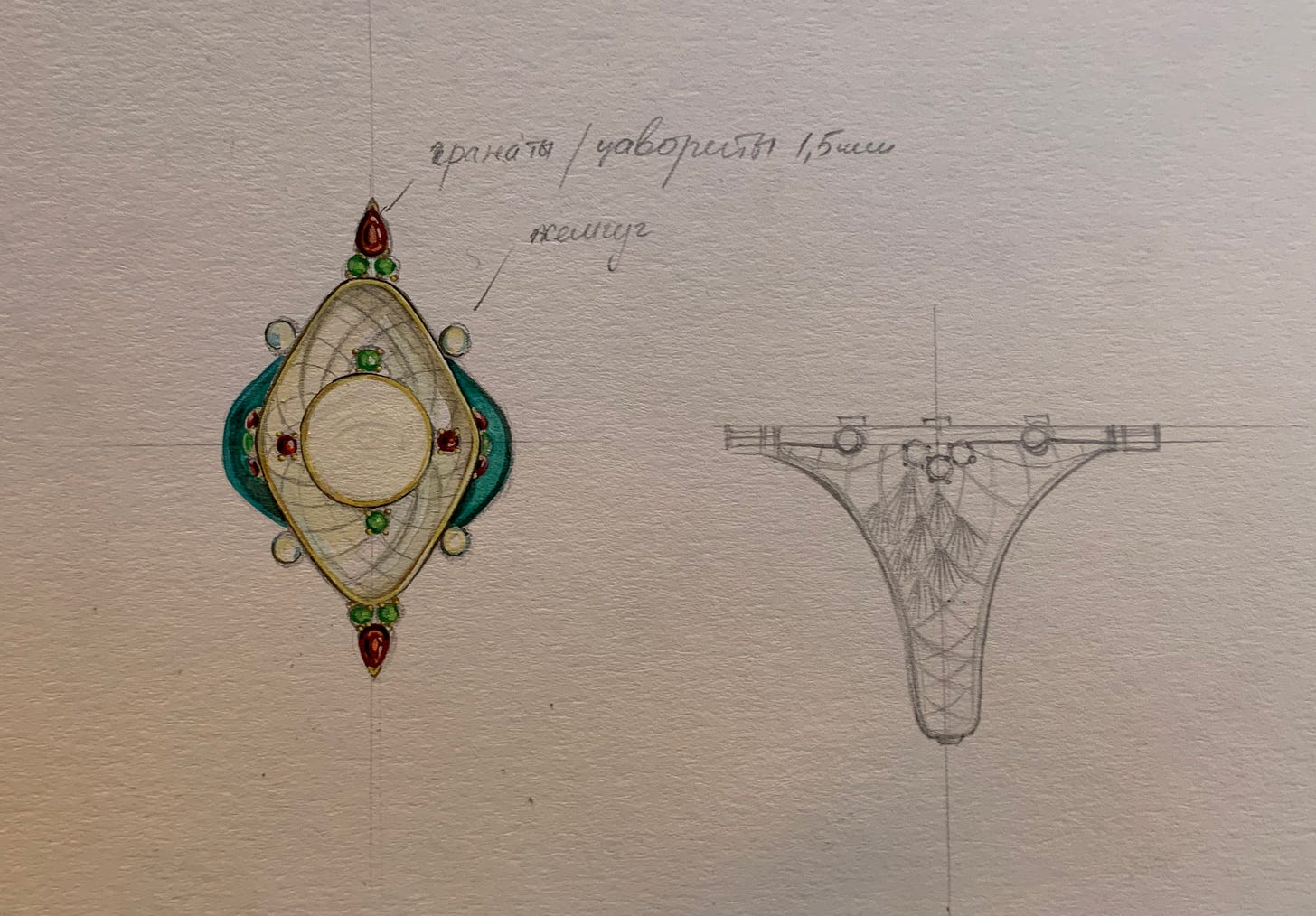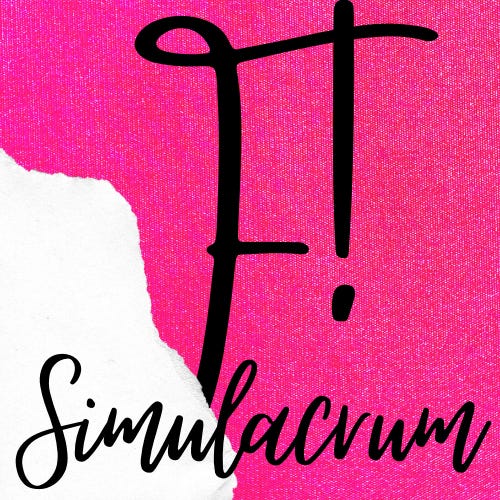The eye of my beloved
This is a story of a jewellery, but also a story about different kinds of love - romantic one, the mother’s devotion to her child and the master’s passion about their creations.
Those three ingredients were mixed together, blended and pressed into the design fragments like tiny pieces of a puzzle, so a ring was born. My ring. A Lover’s Eye ring. An end of a journey that took one year to complete. But where should I start my story?
Romantic love
Eye portraits known as Lover’s Eyes are believed to be invented during a love affair shrouded in secrecy. The Prince of Wales, the future George IV fell in love with a widow, Mrs Maria Fitzherbert, when they were introduced to each other during visiting the opera in 1784. He proposed to her to become his mistress, but that was unacceptable to the Catholic. The prince threatened to kill himself if she wouldn’t marry him so eventually she consented. Georgiana, the Duchess of Devonshire, who accompanied Maria to the prince’s, gave her one of her own rings to formalise the marriage, so in 1785 George sent his love a written marriage proposal and, instead of a ring, a portrait of his right eye painted by Richard Cosway. They had a clandestine wedding ceremony and he received a portrait of her eye in return. But the union wasn’t approved by George III, the marriage remained illegal in England. Unfortunate prince was forced by the Parliament to marry Caroline of Brunswick in 1820.
The gifting of a portrait of an eye was a perfect way of maintaining the anonymity of a lover or romance. But the fashion for Lover’s Eye jewellery spread throughout Europe and through the subjects. In the 19th century they became symbols of all sorts of love, including the parent’s affections to their children. Queen Victoria, for example, commissioned eye portraits of her beloved children as trinkets.
Mother’s love
There’s nothing I can add to the description of mother’s love that hadn’t been said, written or drawn before me. Just the fact, maybe, that you don’t understand it until you feel it. Nothing can be compared to it, nothing is more impressive, undeniable and complete as it. I felt it and I needed to memorise every moment of my son. Photography, videos - that wasn’t enough. I wanted to have something I could wear, hold close to me physically - always and forever - even when my son leaves home to make his own. I thought about the memorabilia, a jewellery I could pass further to him or even to my grandchildren.
I was enchanted by Fatima Roquillo’s paintings, naive, stylized as 18th century colonial art. The artist’s obsession with the Lover’s Eye miniatures was so contagious that I fell in love with those rings, brooches and trinkets myself. And my idea of a ring was born. I knew the very person who could make such jewellery for me, so I’ve made a commission. Then we worked, going from one form to another, looking for the best design that would feel as heritage and contemporary at the same time. I wanted it bright with Indian contrasts of green, whites and red and my son’s eye drawing as sketchy and elegant as it would look in the 18th century.
Master’s love
The ring. It was created by Lena Latysheva, the person behind Russian brand Beenamel. Formal description for the ring would be: hot enamel (guilloche, painted enamel), garnets, tsavorites, pearls, 18K gold. Yes, it doesn’t sound impressive, there are no exaggerated carats and myriads of precious gemstones in ephemeral settings, but what you see is a piece of “semi-high jewellery”, that took 10 months to make. A work of an experienced enameller and a talented miniaturist. That’s a rare quality combination for contemporary designers.
All the stages of the ring creation I’d published on my Instagram (link is above)
The technique so widely used during the Renaissance and revived for Art Nouveau experiments now is almost forgotten. It’s too complex, too time consuming and unpredictable; considered more an art than a commercial production. Only few designers in the world can work with it on the level of Faberge or Lalique. Lena Latysheva studied enamel at the atelier of Ilgiz Fazulzyanov (Ilgiz F.), whose jewellery was exhibited in the Moscow Kremlin Museums alongside Cartier, Bulgary and Buccellati. To distinguish her own style she relied on contemporary minimalism. The contrast of recognizable picturesque quotations and simplicity of the metal work - became her signature concept. The ring you see was a step aside from the usual simplicity into the atelier quality space. The project started as a commission turned into a large scale complicated work, a challenge.
“It’s impossible to single out just one difficult moment when most of the work is manual. - explains Lena. - But the most unpredictable part was opal enamel. Due to the use of it, the temperature and the time of the baking in the muffle furnace should have been closely monitored. Heat overexposure would make it a dull solid white layer instead of sparkling semi-transparent white on the top of the guilloche pattern. And making the different shades of enamel is a series of baking for each layer, each shade. So after a trial, I decided to apply an emerald colour to the splint of the ring first and the transparent enamel on the top. Only after the shade was as desired I moved to the “opal problem” on the central element. In the course of a huge amount of the paint application and "prescriptions" for the finish pattern, it was possible to maintain the desired transparency of the that enamel, make a painting, and secure the spread of the emerald enamel on the splint due to changes in the position of the ring in the stove. Everything went great”.
Love to the jewellery
I look at my ring and can’t stop thinking about my relationships with the jewellery. Some things inspire me, but I don’t want to wear them or own them. That goes to most of the jewellery I’ve seen. But here’s the ring I can’t imagine in the hands of anyone else but me or the family. It feels genderless but strong, strange because of the eye. Added gems made it complete. Solid masculinity gained playful accents. A touch of Renaissance frivolity. It is a true family memorabilia. It is not just based on my son’s portrait, but also “contains” wedding rings of his and my grandparents. How uncomfortable it would be for a stranger to look into someone’s eye while wearing it. How they would wonder what the person is behind the painting, what is the story. The story that is to be lived and written.
/Article was published in Fabuk Magazine, Issue 19, 2022
My platforms
Instagram: https://www.instagram.com/zakharova_kaetano
Twitter: https://twitter.com/olga_kaetano
Telegram: https://t.me/f_simulacrum
Tumblr: https://fashionistaru.tumblr.com
If you like F! Simulacrum and want to help make it even better, give me feedback, point out factual errors or typos, or send me news subjects you want to describe. My email: o.zakharova@adlifestudio.ru
Substack says you can now read my F! Simulacrum in the new Substack app for iPhone. And it will be easier and more comfortable.








